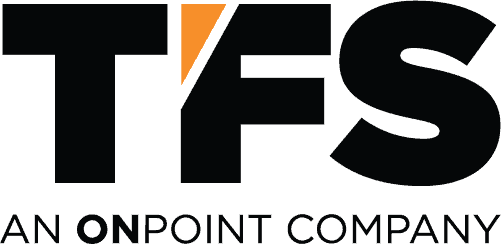 There’s no understating the power of data. And when it comes to keeping material handling facilities running at peak safety and efficiency, telematics has a crucial role to play.
There’s no understating the power of data. And when it comes to keeping material handling facilities running at peak safety and efficiency, telematics has a crucial role to play.
While telematics—a term that blends “telecommunications” and “informatics”—may seem like the hot new buzzword, it’s not. Telematics, which describes the process of collecting and assessing data from warehouse vehicles and equipment through remote telematics systems (e.g., sensors, GPS systems, onboard diagnostics, etc.), has been in use for about two decades and has become increasingly sophisticated.
“Telematics is about using wireless and integrated tech to understand exactly how your equipment and vehicles are being used and by whom,” explains Scott Carlin, TFS’s Chief Sourcing Officer. “More importantly, when you combine telematics data with business intelligence, you start spotting ways to manage your fleet in a way that makes operations safer and more efficient.”
The Telematics Edge
Industries are embracing telematics as a means to understand and control costs. One of the most important advantages of telematics, however, is its ability to inform more impactful workplace safety programs and safeguards.
By embracing telematics, warehouse operators can benefit from:
1. Qualified and careful drivers: Telematics systems can be installed on vehicles to verify that only trained and qualified operators are “logging in” to drive them. These systems can also collect and transmit data regarding a driver’s habits, which supervisors can monitor via a connected device to ensure all safety protocols are being followed. This heightened level of oversight increases safety by ensuring that only safe and trusted operators are getting behind the wheel.
2. Effective safety checklists: Before a trained operator steps into the cab, fleet managers can use telematics to verify whether they have filled out their safety checklists.
“After operators log into their lift, telematics can ensure that it doesn’t even move until operators complete a digital safety checklist ensuring the vehicle is in the right condition,” Carlin says. “We can even randomize those questions to make sure operators aren’t just clicking ‘yes’ all the way down. We can also add tailored questions that pertain to that specific company and warehouse space.”
3. Geofencing / controlling speeds: By setting up sensors in strategic locations around a warehouse, warehouse operators can establish a “geofence” that dictates how the equipment operates within those preset barriers.
“Say, for instance, a client says they want their trucks driving only five or six miles an hour in a certain area. You can set up a geofence that makes it so that trucks slow down as soon as they enter that area,” Carlin says. “Then, you can use the same telematics systems on the equipment to track their speeds and movements elsewhere to make similar safety adjustments.”
If you find that certain operators regularly speed or have some dubious driving practices, you can require more training and track their progress.
4. Enhanced safety records: The ability to collect and track safety-related data in any operation leads to better overall reporting. When safety authorities come knocking, companies have all the data they need in one central location to prove that all safety procedures, checklists, and indecent reports are being done accurately and consistently.
5. Real-time impact reporting: When incidents occur, telematics systems instantly transmit data informing warehouse leaders exactly what happened. These real-time insights can be used to quickly address the damage and potential injuries, as well as to inform future training.
6. Enhanced traffic flows: Digitally tracking fleet movements and activities via GPS and onboard sensors provides a “bird’s eye” view of how equipment and products flow throughout a business. This information can be used to alter traffic patterns for improved safety and productivity.
7. Proactive Fleet maintenance: Data from telematics helps warehouse operators track the condition of every forklift in their fleet. With this information, warehouse operators can establish data-driven preventative maintenance programs that ensure repairs and replacements are identified and addressed before they turn into costly issues. That’s especially important now that lead times for forklifts and other assets are still months or even years out.
Providing up-to-the-moment diagnostics through telematics is key, Carlin adds, especially when fleet managers can receive codes telling them exactly what’s wrong with the equipment.
“Telematics can actually give that data straight to a supervisor’s laptop or the computer, so that they can see what’s going on say, ‘Ok, time to call in my technician’ or, ‘Hey, I’m noting this battery-related code, maybe it’s time to check that out,” Carlin says.
Overall, he adds, the idea of a preventative maintenance program is to take care of the small problems when they occur so that they don’t turn into larger ones: “And when you do that, you extend the life of the product and reduce the total cost of ownership because you’re preventing those larger, last-minute maintenance bills.”
8. Battery status: Effective battery usage and maintenance are central to keeping fleets in motion and avoiding downtime; telematics data keep teams informed of all aspects of battery performance, including charging times and lifespans.
“All of a sudden, you have info on your screen showing that this battery is only lasting four hours while the other trucks are lasting six to eight hours, so maybe I have an issue that I need to take care of,” says Carlin.
Spotting battery issues early prevents potential overheating, which can create safety risks and damage a machine’s electrical components. Knowing when batteries need to be replaced or addressed adds to worker safety and greatly extends the life of one’s products.
9. Promoting productivity: With data from equipment activity feeding back into one central system or dashboard, fleet managers obtain a clearer view of the many factors that impact productivity. This includes equipment usage, product flows, storage considerations, and individual employee performance.
“With that insight, you can start evaluating the data and recognizing who your hardest-working operators are and which have an opportunity to improve efficiencies,” says Carlin. “It’s the ability to look at numbers across your operations and figure out where to improve.”
And let’s face it: during a labor shortage, it’s important to have the knowledge you need to reward and retain your best employees.
10. Combating theft: Tracking equipment and product movements via GPS gives managers the means to act fast when they see that their assets aren’t where they should be. Moreover, it helps to locate missing or stolen items when a loss occurs.
These are some of the ways telematics can transform material handling operations. And while improving productivity and controlling costs are ideal, the true power of telematics is its ability to create safer workplaces.
How to Create a Telematics Roadmap
New to telematics? Hesitant to make the investment? Although the advantages of harnessing data are clear, companies may still be reluctant to make the upgrade. Partnering with a fleet management specialist with experience in telematics can ensure you’ll achieve your goals.
“We can come in, set up telematics so that you’re capturing the data you need, and then work with clients to translate that data into actual, day-to-day strategies,” says Carlin. “Like any technology, it helps to work with partners who can truly walk the walk.”
Telematics not only increases uptime, it can help you save tremendous amounts on equipment and safety issues. In a time when businesses need to cut costs everywhere possible, telematics can help strengthen your program while saving you money.
{{cta(‘d6abfefb-2f45-4962-b496-d29e45468ab1’)}}

